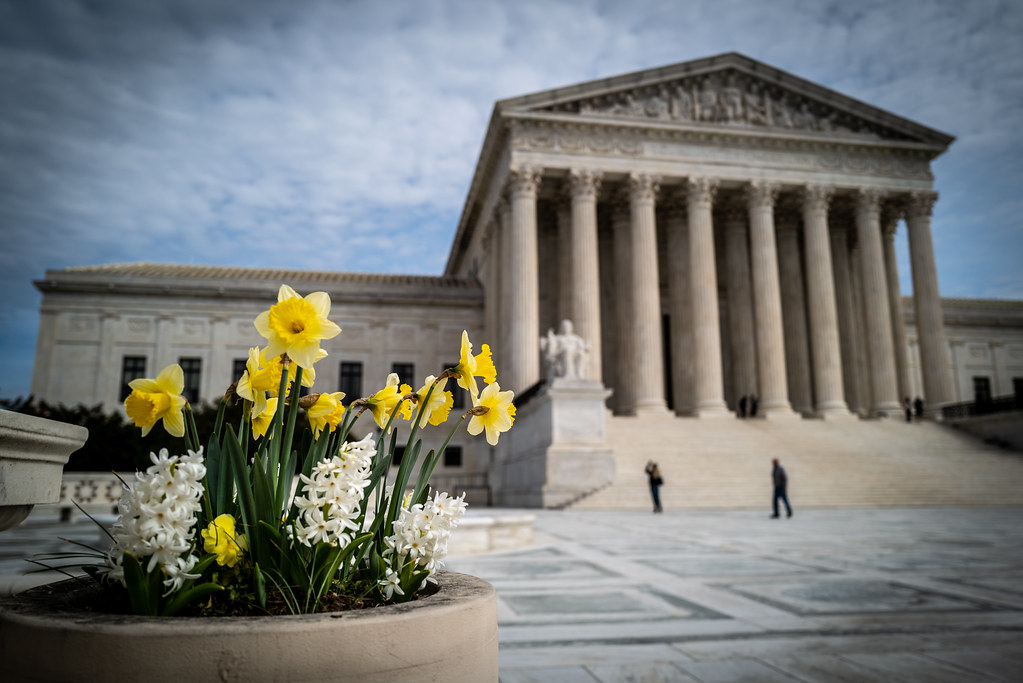Mazars, Vance and the President’s Two Bodies
The opinions reveal a Supreme Court grappling with the implications of the inseparable duality of the individual president and the institutional presidency.

Published by The Lawfare Institute
in Cooperation With

The Supreme Court ended this term with two blockbuster decisions on the presidency and the separation of powers. Trump v. Mazars and Trump v. Vance both concern similar subpoenas, issued by congressional committees and the New York district attorney’s office, respectively, for information about the finances of Donald J. Trump, the individual (as well as his children and affiliated businesses). Of course, although these subpoenas concern personal finances and private business dealings, they pertain to the person who today serves as the nation’s chief executive.
The opinions reveal a Supreme Court grappling with the implications of the president’s “two bodies”—the inseparable duality of the individual president and the institutional presidency. The president is both a human being, with human failings, and an institution co-equal with Congress and the Supreme Court. In an article, published this week in the Columbia Law Review, I argue that this duality is the defining ambiguity of the constitutional office of the president. Seemingly disparate debates on topics ranging from presidential impeachment, to litigation settlements involving the executive branch, to the legal status of presidential tweets, to the remedies available for presidential misconduct reflect this long-standing, ongoing ambivalence about the nature of the presidential office.
The two-bodies prism can elucidate the controversy at the crux of the subpoena cases: Mazars is rooted in the principle that the two bodies are inextricable, their boundaries difficult to define. Vance cautions, however, that public law must not entirely collapse them. In this sense, the duality provides a normative justification for both opinions.
The parties in Mazars framed the case as an either/or. Underscoring the complications of the president’s duality, the case was brought by Trump in his personal capacity, represented by his private lawyers. (The solicitor general participated as an amicus.) But Trump’s argument sought to frame the case in terms of presidential power; the congressional subpoena was a threat to the functioning of constitutional government. The House of Representatives, by contrast, sought to erase the presidency entirely from the nature of the case; here was a congressional subpoena for the personal papers of a private individual (who just happened to be president).
The chief justice, writing for the majority, rightly rejected both of these “single body” templates of the presidency. The interbranch dispute “does not vanish simply because the subpoenas seek personal papers or because the President sued in his personal capacity,” the chief justice emphasized:
The President is the only person who alone composes a branch of government. As a result, there is not always a clear line between his personal and official affairs. “The interest of the man” is often “connected with the constitutional rights of the place.” The Federalist No. 51, at 349. Given the close connection between the Office of the President and its occupant, congressional demands for the President’s papers can implicate the relationship between the branches regardless whether those papers are personal or official. Either way, a demand may aim to harass the President or render him “complaisan[t] to the humors of the Legislature.” Id., no. 71, at 483.
But while the Supreme Court underscored the interconnection between person and institution, it also emphasized that the papers concerned the president’s personal matters and not matters of his office. The court declined the president’s urging to extend the “demanding standards” developed in the context of executive privilege assertions—involving, for example, Oval Office communications with the president. Executive privilege, wrote the court, “safeguards the public interest in candid, confidential deliberations within the Executive Branch.” The court thus “decline[d] to transplant that protection root and branch to cases involving nonprivileged, private information, which by definition does not implicate sensitive Executive Branch deliberations.” Ultimately, the court crafted a novel balancing test, more attuned to the tensions that inhere in the president’s duality.
If Mazars emphasizes that the two bodies are inextricable, Vance cautions that they should never be collapsed. In another opinion by the chief justice, the Supreme Court reasoned that the responsibilities of the presidency do not erase the duties of the citizen. “In our judicial system,” the chief justice wrote, “‘the public has a right to every man’s evidence.’ Since the earliest days of the Republic, ‘every man’ has included the President of the United States.” As such, Article II and the Supremacy Clause neither categorically preclude nor require a heightened standard for the issuance of a state criminal subpoena to the sitting president.
At the heart of Vance was an audacious claim by Trump—in his personal capacity and again represented by his private lawyers—in effect that the sanctity of the office wholly eclipses the responsibilities of the individual to comply with state criminal process. But, as the Supreme Court explained, for two hundred years it has been “established that no citizen, not even the President, is categorically above the common duty to produce evidence when called upon in a criminal proceeding.”
In dissent, Justice Samuel Alito argued that the court focused on this current president and thereby missed “the much deeper significance” of the decision’s impact on the institution of the presidency. He is correct that the decision leaves the institution of the presidency more exposed to “the use of the subpoena power by the Nation’s 2,300+ local prosecutors.” But it is he, not the majority, who misses the deeper significance of the decision: a presidential incumbent insulated from the criminal process is far more threatening to the legitimacy of the constitutional office of the president. The person and the institution are inextricable. A lesson of the Nixon, Clinton and Trump presidencies is that the president’s personal failings can weaken the office, or leave it more legally and politically exposed. But it is not the job of public law to prevent this from occurring by pretending that the country does not currently have the president that it does.
Ultimately, as both Vance and Mazars show and as I elaborate in my article, the legal lines between the president’s two bodies do not emerge from the duality itself. Rather, lawyers and jurists create those lines. And, when they do, they are making choices (often implicit) about how to effectuate substantive constitutional commitments. Even as the two-bodies prism elucidates this crucial role for public law in constituting the office of the president, however, it underscores as well law’s limitations in managing this central tension. Presidential charisma is both inseparable from American constitutionalism and itself governed—albeit incompletely and provisionally—by choices that jurists and lawyers make about how to construct the president’s duality.





